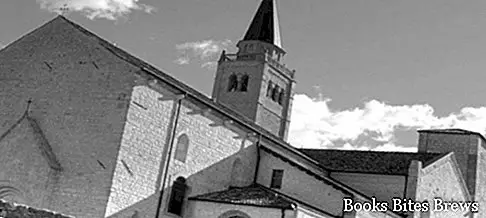What to see in Venzone, itinerary including the main monuments and places of interest in the village, including the Cathedral Church of Sant'Andrea Apostolo and mummies preserved in the Baptistery.
Tourist information
Located at the confluence of the Venzonassa torrent, in the province of Udine from which it is 34 km away, Venzone is an ancient agricultural village in the lower Tagliamento valley, which unfortunately was largely destroyed by the earthquakes that occurred on 6 May and 15 September 1976.
Of medieval origin, the village was built in a strategic position for traffic with the transalpine countries and reached a period of considerable prosperity between the thirteenth and fourteenth centuries.
It was dominated by the patriarchs of Aquileia, from whom it had various privileges, later it was disputed between various lordships, until moving to the Republic of Venice in 1420.
The historic center, razed to the ground by the earthquake and subsequently rebuilt, was surrounded by interesting remains of the double curtain walls, dating back to the thirteenth century, of which only the tower of San Genesio was rebuilt.
What see
The Duomo, or Church of Sant'Andrea Apostolo, also destroyed by the 1976 earthquake and rebuilt in 1988 by anastylosis, or by putting together, as far as possible, the original pieces, has an articulated exterior with polygonal apses, strengthened in correspondence of the corners from culminating buttresses with pyramidal cusps and statues.
Of the three portals that allow access to the interior, the northern one of 1308 includes a high relief in the lunette, depicting the blessing Christ, the work of the master Giovanni, to whose workshop is also attributed the high relief present in the lunette of the southern portal, depicting the Coronation of the Virgin Mary.
The bas-relief of the main portal, which represents the Crucifixion of Jesus, dates back to the mid-fourteenth century.
Also outside there are also other fourteenth-century statues and reliefs, as well as six Venetian-Byzantine patere.
The interior of the Cathedral is structured with a Latin cross plan and a single nave, with a large well-lit transept, overlooked by the triumphal arches of the three apses, flanked by two towers.
There are remarkable frescoes of the fourteenth century, including the Consecration of the Cathedral, the meeting of San Martino with the poor man and San Giorgio who frees the princess from the dragon.
Recommended readings- Venzone (Friuli Venezia Giulia): what to see
- Friuli Venezia Giulia: 1-day Sunday trips
- Arta Terme (Friuli Venezia Giulia): what to see
- Spilimbergo (Friuli Venezia Giulia): what to see
- Aquileia (Friuli Venezia Giulia): what to see
Above the right portal is the Lamentation over the dead Christ, a work in painted and gilded wood, made up of eight statues and dating back to 1530.
Of the sixteenth century are the Baptismal Font, the two holy water fonts and the tombstone of the Antonini family, made by the sculptor Bernardino da Bissone.
Unfortunately it was not possible to recover the cycle of frescoes of the fifteenth century that once decorated the vault of the Gonfalone Chapel, which included frescoes by Domenico Lu Domine and Antonio Baietto, which depicted the Coronation of the Virgin, the Madonna and Child and the blessing Christ.
During the works carried out in 1647, aimed at the expansion of the Cathedral, about twenty naturally mummified bodies were found, thanks to the combined action of the subsoil, rich in calcium sulphates, and of a mushroom having a significant dewatering capacity, which allowed the completion of the mummification process quickly.
Of the mummies found there are only five left, which are exhibited in the crypt of the baptistery of San Michele, next to the Duomo, and constitute a remarkable patrimony of great anthropological interest.




